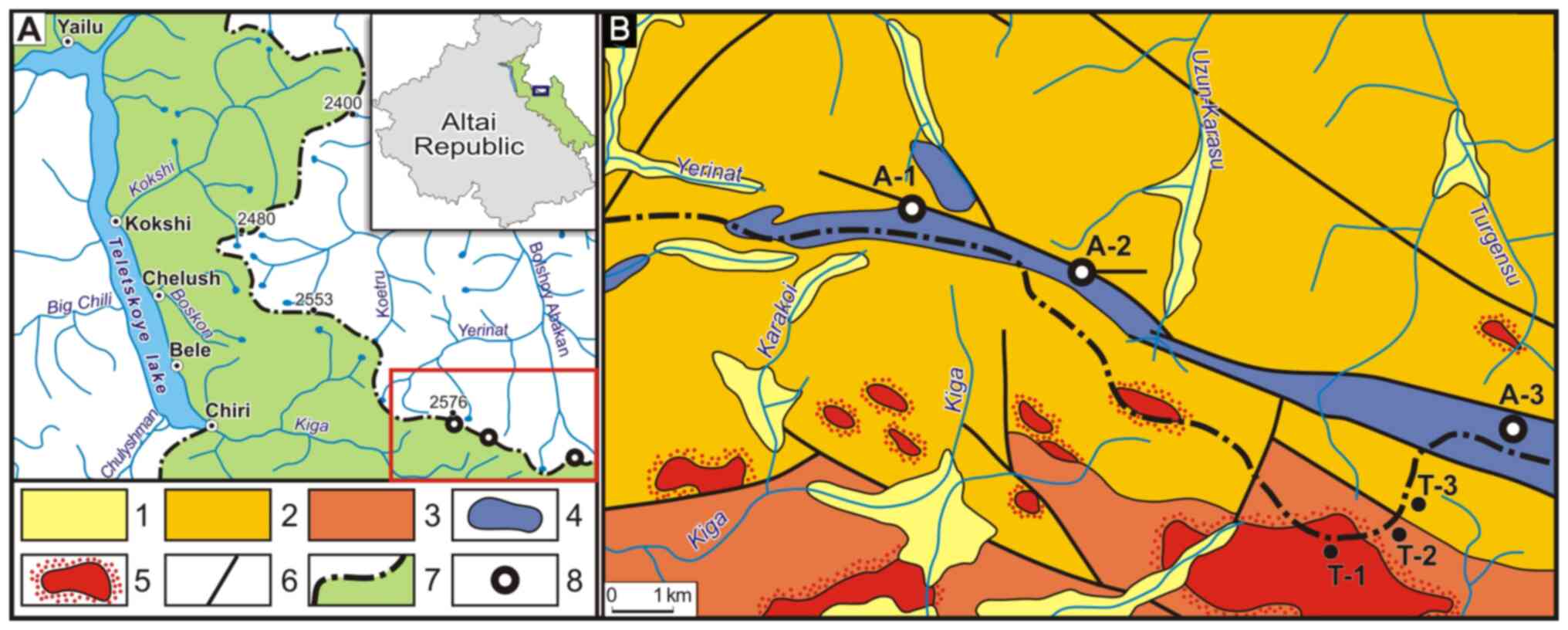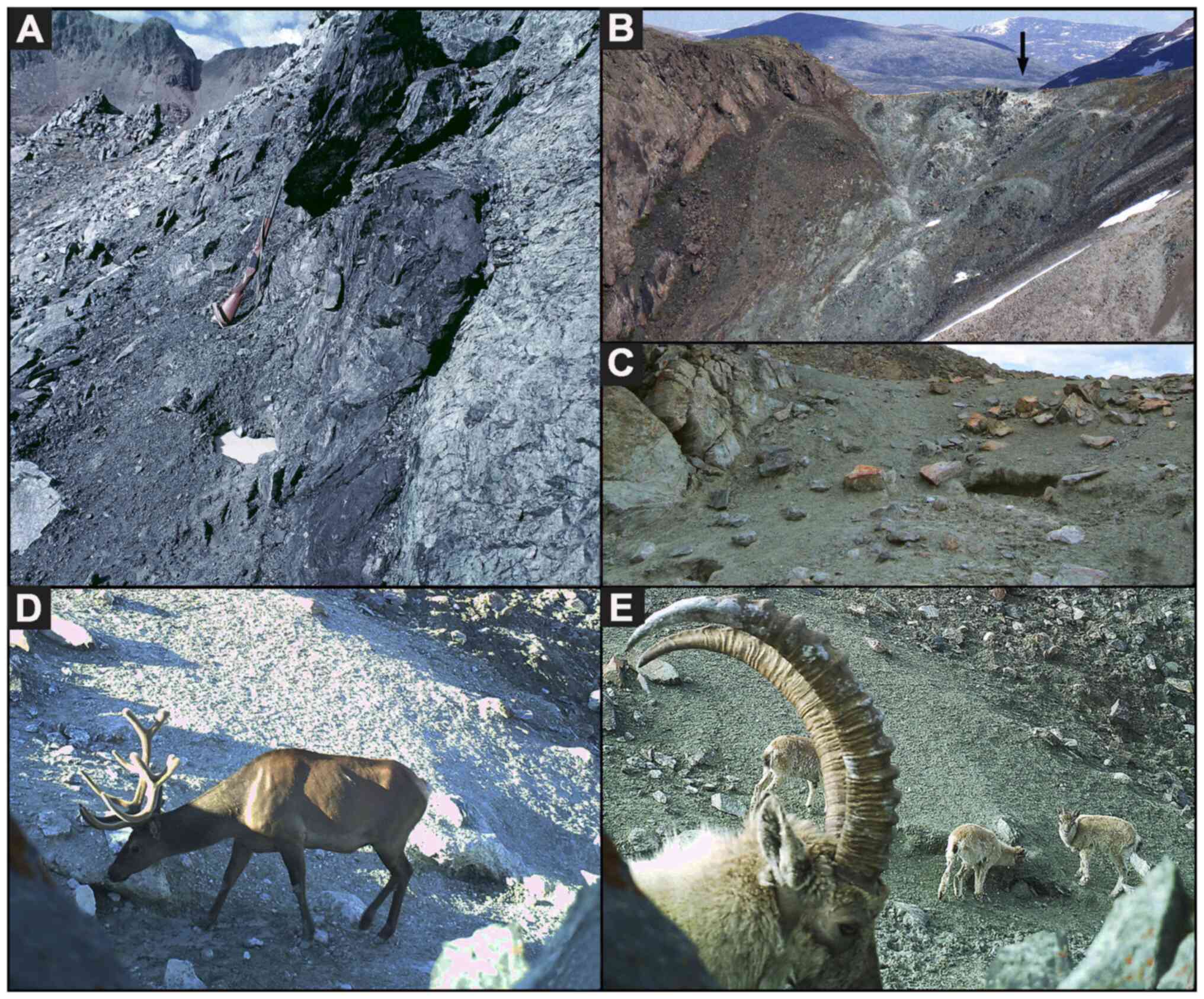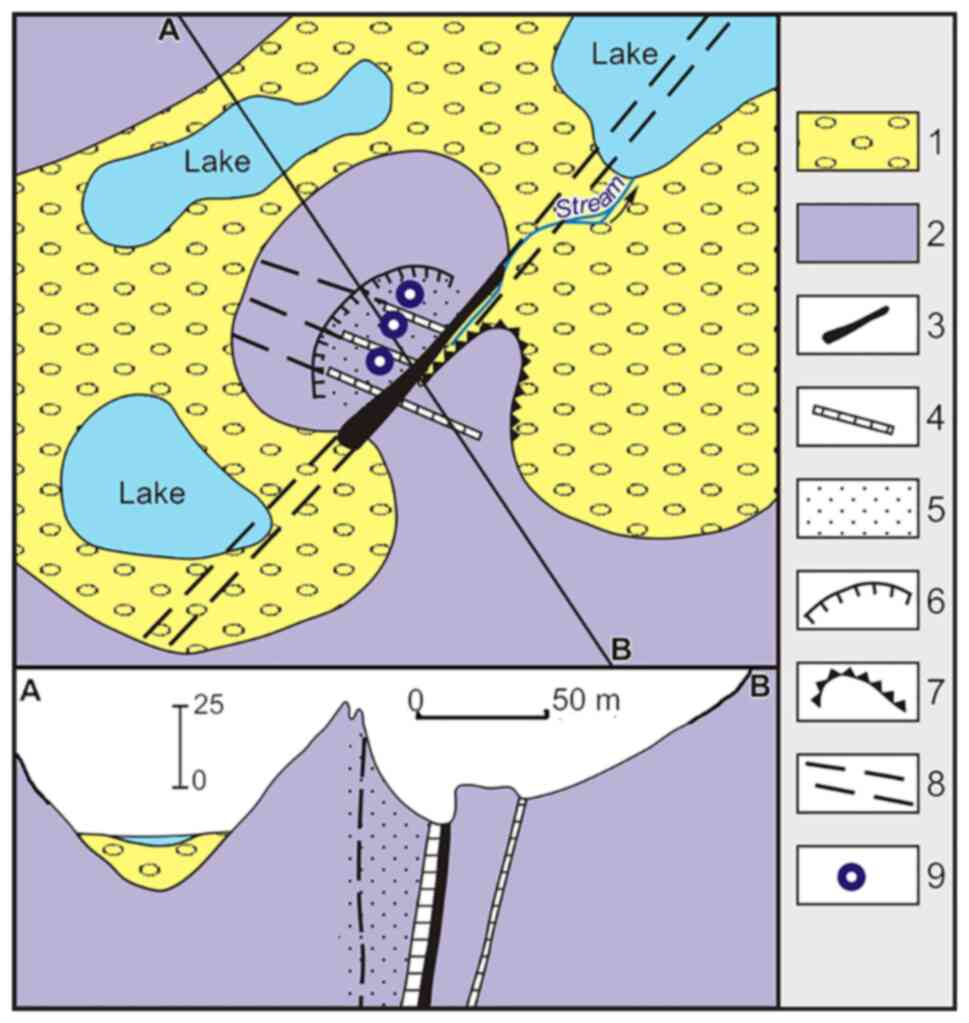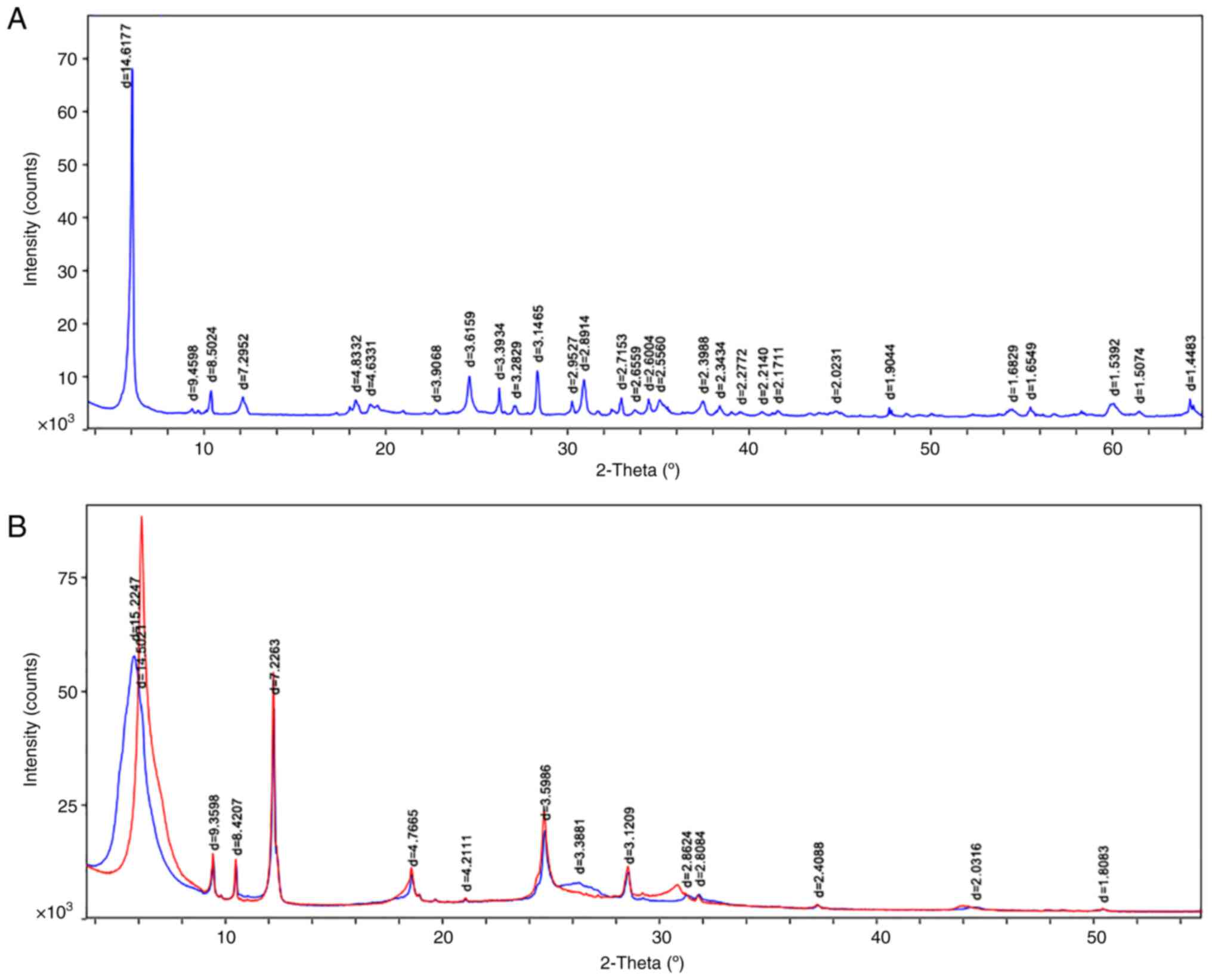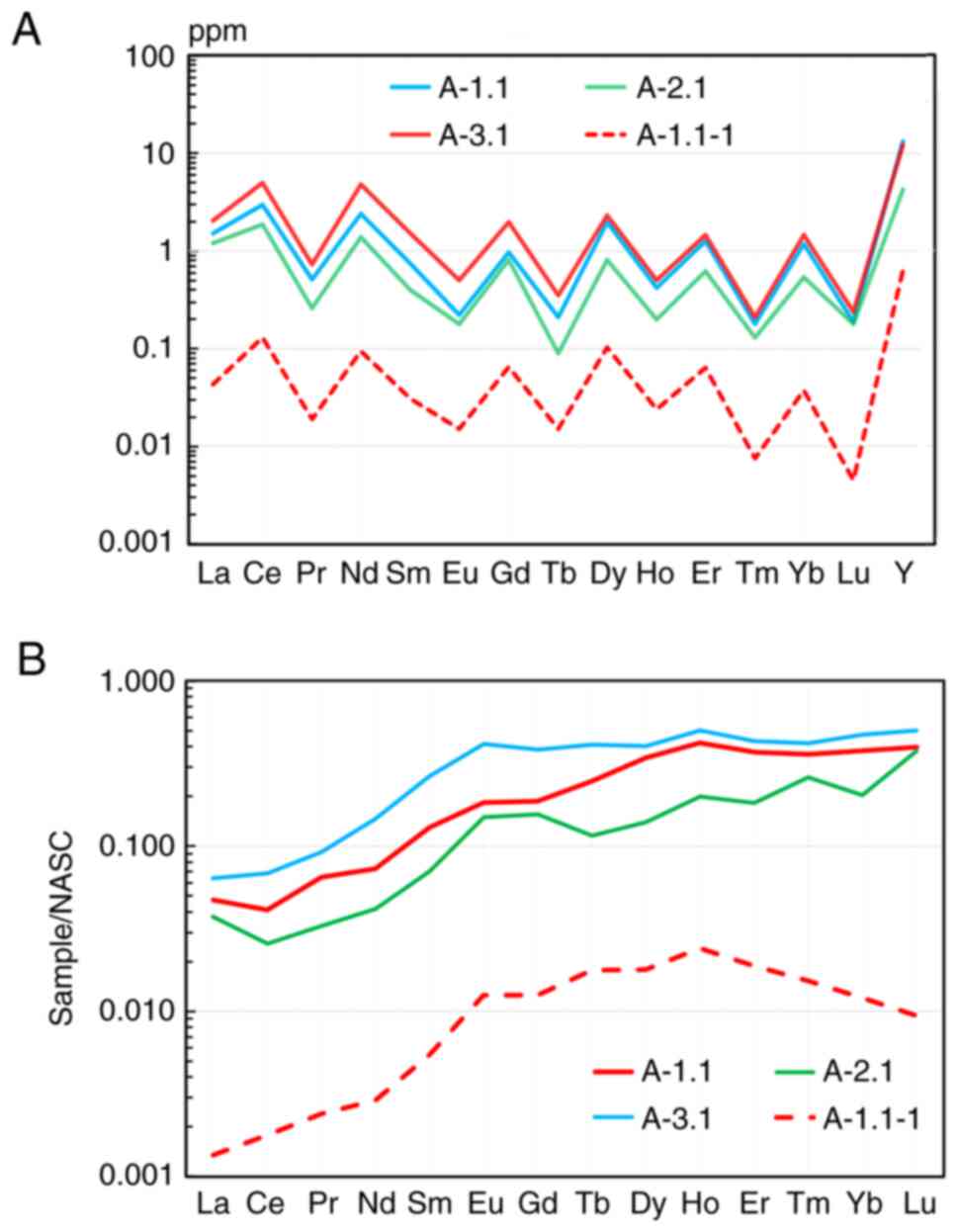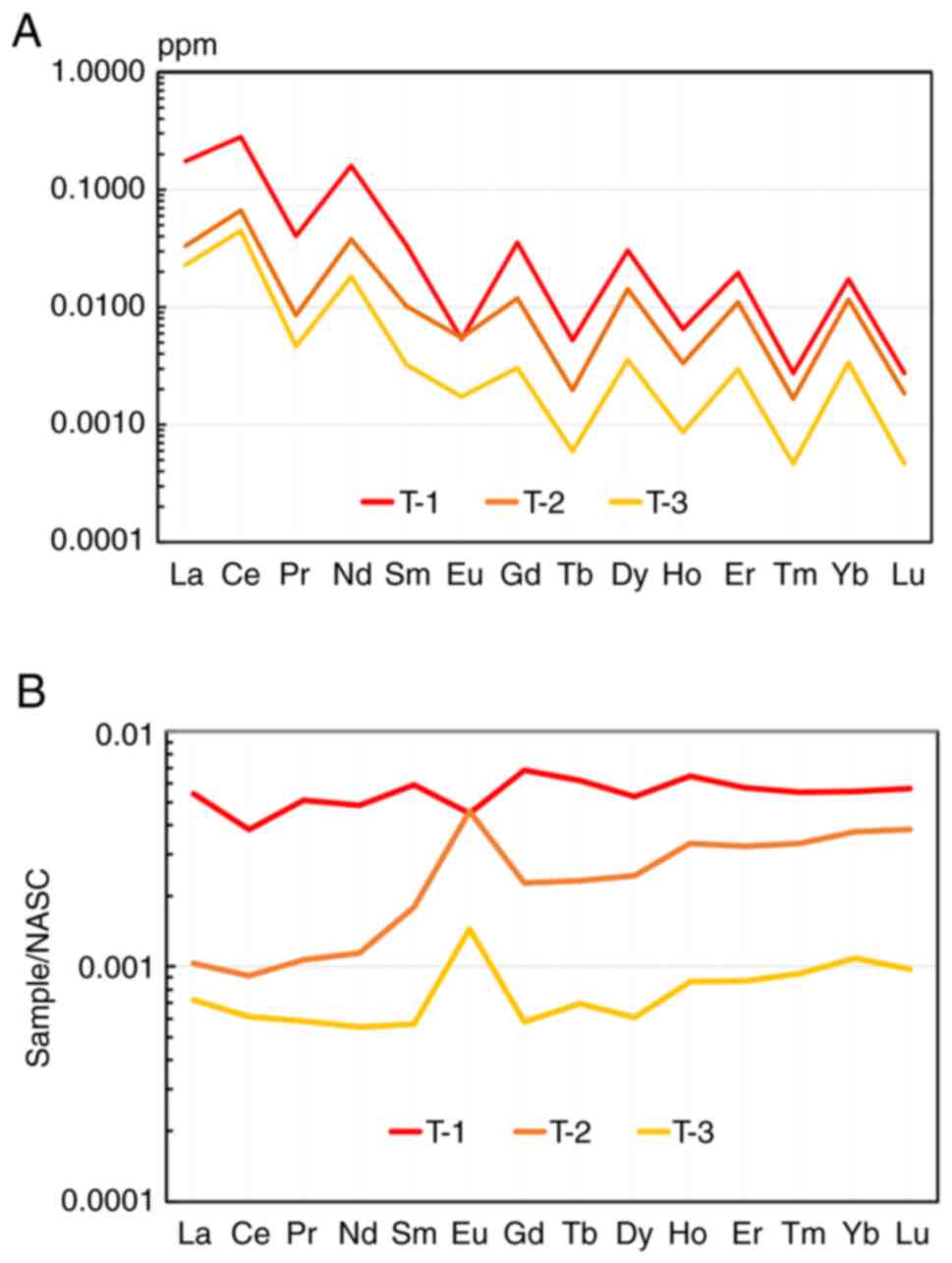|
1
|
Murie A: The moose of Isle Royale.
University of Michigan, museum of zoology. Miscellaneous
Publications. 25:1–44. 1934.
|
|
2
|
Panichev AM, Golokhvast KS, Gulkov AN and
Сhekryzhov IY: Geophagy and geology of mineral licks (kudurs): A
review of Russian publications. Environ Geochem Health. 35:133–152.
2013.PubMed/NCBI View Article : Google Scholar
|
|
3
|
Mahaney WC: Scanning electron-microscopy
of earth mined and eaten by mountain gorillas in the virunga
mountains, Rwanda. Primates. 34:311–319. 1993.
|
|
4
|
Mahaney WC, Aufreiter S and Hancock RGV:
Mountain gorilla geophagy: A possible seasonal behavior for dealing
with the effects of dietary changes. Int J Primatol. 16:475–488.
1995.
|
|
5
|
Mahaney WC, Stambolic A, Knezevich M,
Hancock RFV, Aufreiter S, Sanmugadas K, Kessler MJ and Grynpas MD:
Geophagy amongst rhesus macaques on Cayo-Santiago, Puerto Rico.
Primates. 36:323–333. 1995.
|
|
6
|
Mahaney WC, Hancock RGV, Aufreiter S and
Huffman MA: Geockemistry and Clay mineralogy of termite mound soil
and the role of geophagy in chimpanzeer of the Mahale-mounting,
Tanzania. Primates. 37:121–134. 1996.
|
|
7
|
Mahaney WC, Bezada M, Hancock RGV,
Aufreiter S and Perez FL: Geophagy of Holstein hybrid cattle in the
northern Andes, Venezuela. Mountain Res Develop. 16:177–180.
1996.
|
|
8
|
Mahaney WС, Milner MW, Sunmugadas K,
Hancock RGV, Aufreiter S, Wragham R and Pier HW: Analysis of
geophagy soils in Kibale Forest, Uganda. Primates. 38:159–176.
1997.
|
|
9
|
Mahaney WC, Milner MW, Muliono H, Hancock
RGV and Aufreiter S: Mineral and chemical analyses of soil eaten by
humans in Indonesia. Int J Environm Health Research. 10:93–109.
2000.
|
|
10
|
Moe SR: Mineral content and wildlife use
of soil licks in southwestern Nepal. Can J Zool. 71:933–936.
1993.
|
|
11
|
Abrahams PW: The chemistry and mineralogy
of three Savanna lick soils. J Chem Ecol. 25:28–2215. 1999.
|
|
12
|
Panichev AM: Geophagia in the worlds of
animals and humans. Moscow: Nauka (In Russian): 223, 1990.
|
|
13
|
Panichev AM: Geophagy (geological,
ecological and biomedical aspects). Moscow: Nauka (In Russian):
149, 2011.
|
|
14
|
Panichev AM: Animal salt licks of the
Sikhote-Alin. Vladivostok, Far East scientific center of the USSR
academy of sciences (In Russian): 208, 1987.
|
|
15
|
Panichev AM, Popov VK, Chekryzhov IY,
Seryodkin IV, Stolyarova TA, Zakusin SV, Sergievich AA and
Khoroshikh PP: Rare earth elements upon assessment of reasons of
the geophagy in Sikhote-Alin region (Russian Federation), Africa
and other world regions. Environ Geochem Health. 38:1255–1270.
2016.PubMed/NCBI View Article : Google Scholar
|
|
16
|
Panichev AM, Seryodkin IV, Kalinkin YN,
Makarevich RA, Stolyarova TA, Sergievich AA and Khoroshikh PP:
Development of the ‘rare-earth’ hypothesis to explain the reasons
of geophagy in Teletskoye Lake are kudurs (Gorny Altai, Russia).
Environ Geochem Health. 40:1299–1316. 2018.PubMed/NCBI View Article : Google Scholar
|
|
17
|
Panichev AM, Baranovskaya NV, Seryodkin
IV, Chekryzhov IY, Vakh EA, Soktoev BR, Belyanovskaya AI,
Makarevich RA, Lutsenko TN, Popov NY, et al: Landscape REE
anomalies and the cause of geophagy in wild animals at kudurs
(mineral salt licks) in the Sikhote-Alin (Primorsky Krai, Russia).
Environ Geochem Health. 44:1–24. 2022.PubMed/NCBI View Article : Google Scholar
|
|
18
|
Bgatov VI, Panichev AM, Sobanskii GG, Van
AV and Budnikov IV: Animal licks in Siberian mountains. Bulletin of
Moscow society of nature investigators. Department Biol. 93:42–53.
1988.(In Russian).
|
|
19
|
Gromet LP, Dymek RF, Haskin LA and Korotev
RL: The ‘North American shale composite’; its compilation, major
and trace element characteristics. Geochimica et Cosmochimica Acta.
48:2469–2482. 1984.
|
|
20
|
Kreulen DA: Lick use by large herbivores:
A review of benefits and banes of soil consumption. Mammal Rev.
15:107–123. 1985.
|
|
21
|
Klaus G and Schmid B: Geophagy at natural
licks and mammal ecology: A review. Mammalia. 62:482–498. 1998.
|
|
22
|
Dalke PD, Bеeman RD, Kindel FJ, Robel RJ
and Williams TR: Use of salt by elk in Idaho. J Wildlife Manage.
29:319–332. 1965.
|
|
23
|
Hebert D and Cowan IM: Natural saltlicks
as a part of the ecology of the mountain goat. Can J Zool.
49:605–610. 1971.PubMed/NCBI View
Article : Google Scholar
|
|
24
|
Аnell B and Lagercrantz S: Gefagical
customs. Stud Ethnogr Upsal. 17(98)1958.
|
|
25
|
Shaposhnikov FD: On salt-licking of wild
ungulates in the mountain-taiga Altai. Byulleten' Moskovskogo
Obshchestva Ispytatelei Prirody Otdel Biologicheskii 58: Вып. 1. С.
3-10 1953 (In Russian).
|
|
26
|
Abrahams PW: Geophagy (soil consumption)
and iron supplementation in Uganda Trop. Med Int Health. 2:617–623.
1997.PubMed/NCBI View Article : Google Scholar
|
|
27
|
Ketch LA, Malloch D, Mahaney WC and
Huffman MA: Comparative microbial analysis and clay mineralogy of
soil eaten by chimpanzees (Pan troglodytes schweinfurhii) in
Tanzania. Soil Biol Biochem. 33:199–203. 2001.
|
|
28
|
Krishnamani R and Mahaney WC: Geophagy
among primates: Adaptive significance and ecological consequences.
Animal Behavior. 59:899–915. 2002.PubMed/NCBI View Article : Google Scholar
|
|
29
|
Wilson MJ: Сlay mineralogical and related
characteristics of geophagic materials. J Chemical Ecol.
29:1525–1547. 2003.PubMed/NCBI View Article : Google Scholar
|
|
30
|
Nasimovich АА: In regard to the knowledge
of the mineral nutrition of wild animals of Caucasian Reserve.
Proceedings Caucasus Nat Res. Moscow. 1:103–150. 1938.(In
Russian).
|
|
31
|
Fraser D and Reardon E: Attraction of wild
ungulates to mineral-rich springs in central Canada. Holarctic
Ecol. 3:36–40. 1980.
|
|
32
|
Oates JF: Water-plant and soil consumption
by Guereza Monkeys (Colobus guereza): A relationship with minerals
and toxins in the diet? Biotropica. 10:241–253. 1978.
|
|
33
|
Gilardi JD, Duffey SS, Munn CA and Tell L:
Biochemical functions of geophagy in parrots: Detoxification of
dietary toxins and cytoprotective effects. J Chem Ecol. 25:897–922.
1999.
|
|
34
|
Houston DC, Gilardi JD and Hall AJ: Soil
consumption by elephants might help to minimize the toxic effects
of plant secondary compounds in forest browse. Mammal Rev.
31:249–254. 2001.
|
|
35
|
Pebsworth PA, Huffman MA, Lambert JE and
Young SL: Geophagy among nonhuman primates: A systematic review of
current knowledge and suggestions for future directions. Am J Phys
Anthropol. 168 (Suppl 67):164–194. 2018.PubMed/NCBI View Article : Google Scholar
|
|
36
|
Ekosse GI, Chistyakov KV, Rozanov AB,
Bashkirova NN, Dultz S, Polekhovsky YS and Lessovaia SN: Landscape
settings and mineralogy of some geophagic clay occurrences in South
Africa/O. V. Frank-Kamenetskaya et al: (eds.), Processes and
Phenomena on the Boundary Between Biogenic and Abiogenic Nature,
Lecture Notes in Earth System Sciences pp785-801, 2020.
|
|
37
|
Vermeer DE and Ferrell RE: Nigerian
geophagical clay: A traditional anti-diarrhoeal pharmaceutical.
Science. 227:634–636. 1985.PubMed/NCBI View Article : Google Scholar
|
|
38
|
Mahaney WC: Notes on the behaviour of the
African buffalo (Syncerus caffer caffer) on Mount Kenya. Afr J
Ecol. 25:199–202. 1987.
|
|
39
|
Mahaney WC and Hancock RGV: Geochemistry
of African buffalo (Syncerus caffer caffer) mining sites and dung
on Mount Kenya, East Africa. Mammalia. 54:25–32. 1990.
|
|
40
|
Robbins CT: Wildlife Feeding and
Nutrition. New York, Academic Press. pp337, 1983.
|
|
41
|
Redling K: Rare Earth Elements in
Agriculture with Emphasis on Animal Husbandry. Dissertation, LMU
München: Tierärztlichen Fakultät, 2006. doi: 10.5282/edoc.5936.
Available at: https://edoc.ub.uni-muenchen.de/5936/.
|
|
42
|
Panichev AM: Rare earth elements: Review
of medical and biological properties and their abundance in the
rock materials and mineralized spring waters in the context of
animal and human geophagia reasons evaluation. Achievements Life
Sci. 9:95–103. 2015.
|
|
43
|
Panichev AM: Geophagia: Causes of the
phenomenon. Priroda. 4:25–35. 2016.(In Russian).
|
|
44
|
Powis DA, Clark CL and O'Brien KJ:
Lanthanum can be transported by the sodium-calcium exchange pathway
and directly triggers catecholamine release from bovine chromaffin
cells. Cell Calcium. 16:377–390. 1994.PubMed/NCBI View Article : Google Scholar
|
|
45
|
Prasad AS: A diet of zinc or clay.
Citation classic. Curr Contents Life Sci. 34(11)1991.
|
|
46
|
Collignon R: А propos des troubles des
conduites alimentaires du pica des médecins à la géophagie des
géographes, des voyageurs et des ethnologues. Psychopathologie
Africaine. 24:385–396. 1992.
|
|
47
|
Selinus O, Finkelman RB and Centeno JA:
Medical geology. A regional synthesis. Springer: 392, 2010.
|
|
48
|
Campuzano Maya G: Pica: El síntoma
olvidado. Medicina Laboratorio. 17:533–552. 2011.
|
|
49
|
Kutty VR, Abraham S and Kartha CC:
Geographical distribution of endomyocardial fibrosis in South
Kerala. Int Epidemiological Association. 25:1220–1207.
1996.PubMed/NCBI View Article : Google Scholar
|
|
50
|
Smith B, Chenery SRN, Cook JM, Styles MT,
Tiberindwa JV, Hampton C, Freers J, Rutakinggirwa M, Sserunjogi L,
Tomkins A and Brown CJ: Geochemical and environmental factors
controlling exposure to cerium and magnesium in Uganda. J
Geochemical Exploration. 65:1–15. 1998.
|
|
51
|
Cragin FW: Observations on Cachexia
Africana or dirt-eating. Am J Med Sci. 17:356–364. 1836.
|















